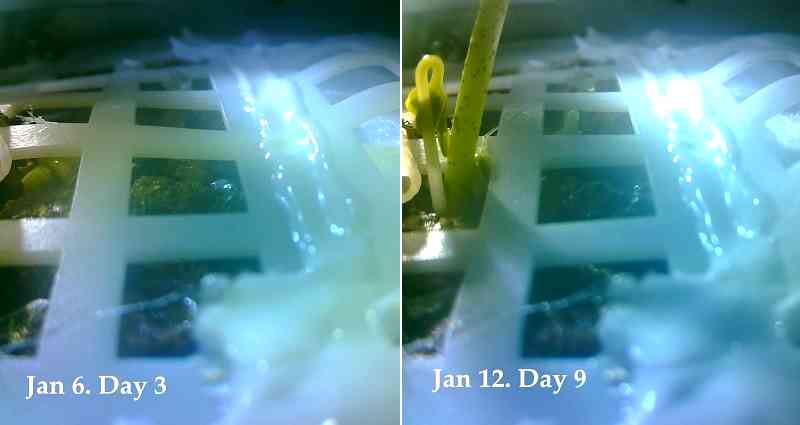China’s Lunar Spacecraft Grows the Very First Plants on the Moon



By Bryan Ke
January 16, 2019
Nearly two weeks after making a successful landing on the dark side of the moon with Chang’e 4, China’s moon mission saw the first sprout of cotton seeds planted in the mini biosphere of its lunar spacecraft.
Scientists behind the experiment made the astonishing announcement on Tuesday.
The cotton seeds were just one of the many types of seeds that Chinese scientists planted on the Chang’e 4 lander, which will soon form a simple mini biosphere – a self-sustaining, artificial environment, according to Professor Xie Gengxin of Chongqing University and chief designer of the experiment, Xinhua News reported.
Other seeds boarded on the lander are: rapeseed, potato, and arabidopsis. Eggs of the common fruit fly were also included in the experiment, as well as yeast.
Head of the experiment, Professor Liu Hanlong, said in the announcement that in addition to the cotton seeds, the potato seeds and rapeseed have sprouted as well and are growing as of Saturday, South China Morning Post reported.
“We have given consideration to future survival in space. Learning about these plants’ growth in a low-gravity environment would allow us to lay the foundation for our future establishment of space base,” Liu said.
Each of the six components boarded on the Chang’e 4 lunar spacecraft has their own role as “producers, consumers, and decomposers” in the artificial micro-ecosystem, said Liu. The plants will produce food and oxygen that will help sustain the fruit flies while the yeast will act as decomposing agent that will process waste from both the insects and dead plants, and convert it to an additional food source for the flies.
Aside from aiding the insects to live in the biosphere, the potatoes, cotton, and rapeseed could respectively provide food, clothing, and oil for future space explorers.
These six species were chosen to be added on the Chang’e 4’s mini biosphere for their small size and ability to grow in confined spaces. Additionally, they were resistant enough to withstand the extreme conditions of the lunar surface.
The container was equipped with a control system that can maintain the interior temperature at around 25 degrees Celsius (77 degrees Fahrenheit), Liu said.
Scientists were able to render the seeds dormant during the two months when the probe was traveling from Earth to the moon before its landing on Jan. 3. After the successful soft-landing, command center instructed the probe to start watering the plants so it could begin the growing process.
Meanwhile, a tube helps direct natural light on the surface of the moon and into the canister to allow the seeds to grow.
Featured image via Twitter / China Xinhua News
Share this Article
Share this Article